Destructive toddler behavior can signal serious emotional and behavioral problems, reports researchers of Washington University School of Medicine St. Louis. Throwing tantrums is a common behavior and considered normal in young children. Extreme aggression and self-destructive behavior may be an effect of psychiatric illness like ADHD (Attention Deficit Hyperactivity Disorder) or depression.
The finding was confirmed after comparing tantrums of healthy and mentally disturbed children. It is not that healthy children do not show temper tantrums, but the frequency is less. Healthy children, when tired or hungry, often throw tantrums – this is normal. These tantrums are short spanned and are not difficult to tackle.
This is voiced first by the author Andrew C. Belden, PhD, a postdoctoral researcher of child psychiatry of National Institute of Health (NIH). Parents need to watch how frequently their child is engaging in temper tantrums, along with its nature and severity.
How to identify destructive toddler behavior?

The research report was published in the Journal of Pediatrics after studying the behavioral pattern of 270 children aged 3-6 years. Information about tantrum events was collected from parents. Children were categorized into four groups based on their age, mental and behavioral disorders.
Their behavior was watched for years to diagnose depression and other behavioral problems as most of them were unable to communicate their feelings. These little creatures hardly can talk about their emotions. Parents need to take account of this limitation of their kids. However, Belden and colleagues could identify four types of behavior that could be linked to destructive toddler behavior and clinical psychiatric disorders.
Extreme aggression while showing tantrum:
Is the child hitting parents or caregiver? Is the child getting too violent? If yes, then there is a serious reason for concern. Throwing toys or anything towards parents, siblings, friends and caregivers during tantrums with the intent to hit should not be ignored. The above study found such children have chances of being diagnosed with ADHD, oppositional-defiant disorder and others.
A tendency of self-harm:
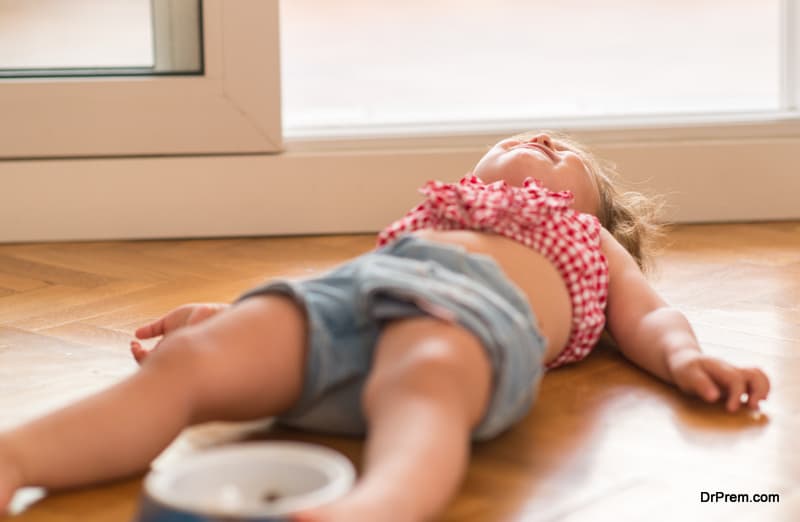
A child can show a worrisome behavior when he/she tries injuring self intentionally. The child may bang his/her head, bite themselves or scratch until it bleeds. It is not how often this happens or the duration that matters – but such behaviors of a violent child point towards depressive disorder. The study found that this type of behavior was not present in healthy children or those with ADHD.
Frequency of tantrums:
This is very much associated with destructive toddler behavior. More than five tantrums a day and for consecutive seven days is quite alarming. Duration of the tantrum is also another big issue. For healthy children, it should not be more than 10-11 minutes per tantrum. Children with disruptive disorders are likely to continue their tantrums for more than 25 minutes.
Inability to calm down after tantrum:

Is your child having difficulty to calm down after tantrum? Preschoolers with this condition are at a higher risk of developing psychiatric problems in future. If parents have to bribe or give rewards to calm down the children, this can point out to a more serious condition than normal child behavior.
Assessing destructive toddler behavior:
Good news is that it is normal for a child to display aggressive behavior. If a child behaves aggressively towards you, no need to panic. But if he/she lashes and hits you in every event of the tantrum, it may signal a bigger problem. If they show a tendency of intentional self-injuring, it is best to consult a pediatrician or mental health professional.
Managing destructive toddler behavior:

Destructive behaviors in toddlers and children need to be managed, not overlooked. It would be wrong to think things will be fine as the child grows. It may be normal and may not be. Parents should have a keen eye on this and adopt suitable measures.
Try to understand your child:
How well do you know your child? Are you aware of his/her emotional needs? This is the most crucial step before you take other measures to stop destructive toddler behavior. Your child has a unique personality. Appreciate it. Take time to understand his/her behaviors, actions in schools, likes and bothersome things.
Support your child’s individuality:
Your kid may be over active compared to peers. Do not crib on it. Instead, plan some constructive activities to channelize his/her energy that will also help in developing cognition skill and attention.
Aim for preventive measures:
One or two destructive behaviors should alert you about your kid’s tendencies. Always be alert to take preventive measures so that he/she could not do serious damage.
Never give in to all demands:

Giving in to each and every demand of the child may fuel destructive toddler behavior. Your child may resort to destructive toddler activities once his/her demands go unfulfilled.
Stop yelling and punishing the child unnecessarily:
Parents too get stressed as they are pulled in different directions and yelling comes out as a natural way to vent out frustrations. But yelling never helps, rather, it worsens the situation. Yelling is scary for kids with a sensitive nervous system. They become distant to you and lose mental comfort. Naturally, it can create a more violent child, hitting parents more frequently.
To check your yelling habit:
- Identify triggers. This will keep you alert and prevent yelling.
- Warn your kids if they are resorting to destructive actions and indiscipline in a stern voice without yelling.
- Take your time out. When you feel like shouting, just leave the room and take a few minutes to calm yourself.
- Explain your feelings. Instead of shouting, talk with your child gently and explain that you felt bad for his/her destructive behavior. This will help kids to build realization and confidence to manage his/her behavior.
- Invite your child to help you in cleaning up the mess. He/she will understand the consequence of destructive actions.
- Share the troubles of cleaning and managing with your partner. It will help you curb your temper and stop yelling.
Encourage your child’s good behavior:
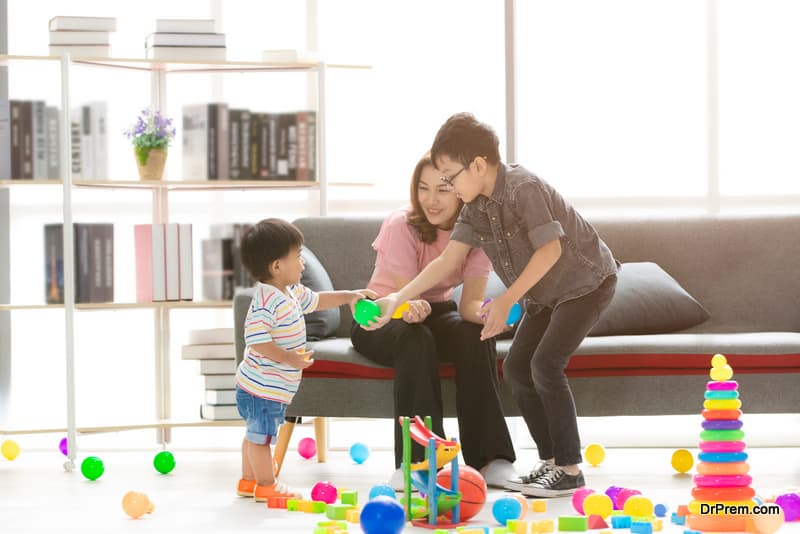
Regular toddler tantrums can be exhausting for parents. You may feel disappointed and discouraged to train your child for good behavior. That will do more harm. Keep encouraging your child for good behavior. Show that good behavior is always appreciated. It would not be bad to take a few parenting classes to tackle this situation.
Discipline your child:
Disciplining a 3-4 year child is tricky. No yelling. No beating. This will backfire. Catch your child right at the moment of aggression or destruction. Firmly say this behavior or act (breaking/throwing things) will not be entertained. You must remain calm. Some display of aggression can be ignored.
Give some commands to discipline your child. If he/she refuses, cut down one of your child’s favorite privileges. It may be refusing him/her an ice cream or cake or not allowing the child to watch TV or play with his/her favorite toy. Don’t force him/her to follow your commands.
Engage your child in constructive destruction:
If your child has a tendency of tearing books, hand over a stack of newspapers. Also, train him/her to clean up the mess after the tearing activity. Show how to use the bin. This will keep him/her healthily engaged, causing fewer events of tantrums.
Place a big sheet of white paper on the floor and give your child some crayons to do some unique artwork. Initially, you may have to sit with him/her to make things comfortable. After some time, your child will pick up and enjoy nurturing his/her artistic skills. You need to encourage your child continuously with whatever he/she creates.



